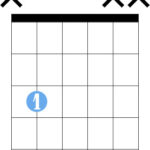It’s easy to get caught up in the visual spectacle of Jimmy Page wielding a double-neck guitar, and some might even dismiss it as mere showmanship. However, delving deeper into Page’s career reveals a far more nuanced and profound understanding of the guitar. Recent explorations into his biography illuminate his extensive background as a session musician, a period that significantly shaped his approach to the instrument long before the thunderous reign of Led Zeppelin. This foundation underscores his pivotal role within Led Zeppelin, often acting as the driving force behind production and arrangement, in addition to his iconic guitar work on both six and twelve-string guitars. It’s worthwhile to rediscover Led Zeppelin’s catalog, particularly the softer, acoustic-driven pieces that often get overshadowed by their stadium anthems, revealing another layer to Page’s musicality.
Page himself offered a practical explanation for his famed double-neck guitar. For him, it wasn’t about theatrics, but pure stage efficiency. He frequently transitioned between six and twelve-string guitars, sometimes within a single song or seamlessly between consecutive tracks. The cumbersome nature of swapping guitars mid-performance – the time lost, the momentum broken – led him to adopt the double-neck as a practical solution. It streamlined these transitions, allowing him to maintain the flow of the performance without sacrificing the tonal textures he sought, and it’s important to note this was purely about guitar variations; the presence of John Paul Jones naturally negated any need for a guitar/bass double-neck configuration within Led Zeppelin.
While the logistics of string changes and tuning might seem trivial given the resources of a major band, Page’s double-neck choice highlights his meticulous attention to detail and commitment to a seamless live experience. It’s a testament to his professionalism and focus on delivering the best possible performance, where even instrument changes were carefully considered and optimized. Ultimately, Jimmy Page’s guitar legacy extends far beyond the visual impact of his double-neck. It’s rooted in his deep musicality, his studio expertise, and his innovative approach to live performance, all contributing to his enduring status as a true guitar icon.

